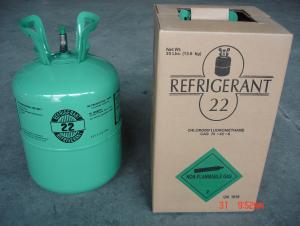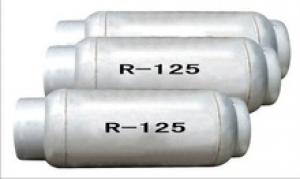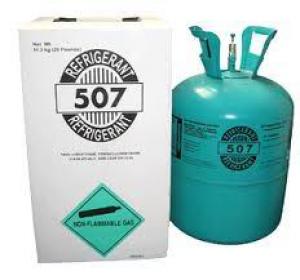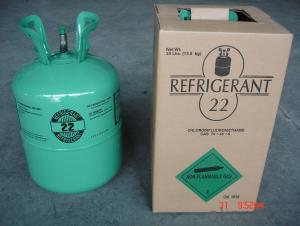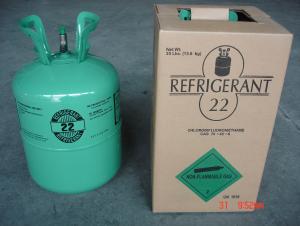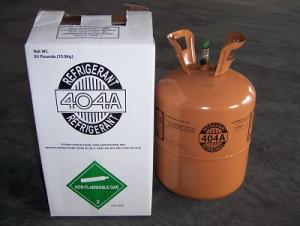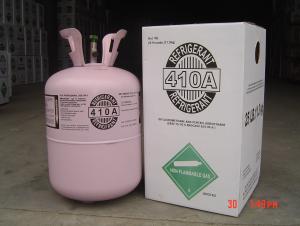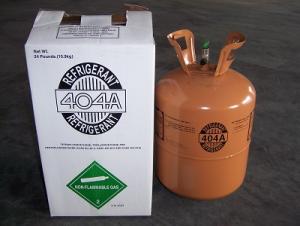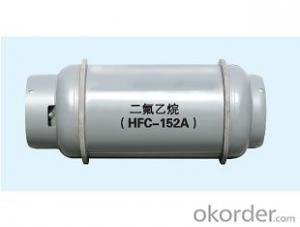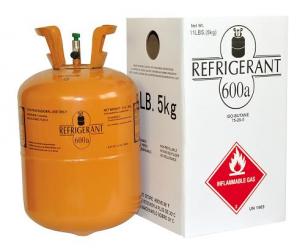Common Used R22 Gas
- Loading Port:
- Ningbo
- Payment Terms:
- TT OR LC
- Min Order Qty:
- -
- Supply Capability:
- 100MT m.t./month
OKorder Service Pledge
OKorder Financial Service
You Might Also Like
Property of chloride : |
| ||||||||||||||||||
Packing: | Disposable cylinder 30lb/13.6kg,50lb/22.7kg recyclable cylinder 400L, 800L, 926L,1000L, ISO-Tank | ||||||||||||||||||
| |||||||||||||||||||
Quality standard : |
Acidity,PPm ≤0.1 | ||||||||||||||||||
R22 is primarily used as a refrigerant compound as well as in the production of polystyrene and polyurethane foam plastics.It is the most common refrigerant worldwide,however,it is going away
- Q: What is the isomeric structure of oxygen-containing derivatives?
- Play the Transformers. As long as the same molecular formula, you can group out how many different structures, there are a number of isomers.
- Q: Hydrocarbons and hydrocarbon derivatives are not all non-electrolytes
- Hydrocarbons are, derivatives are not necessarily, such as organic acids (formic acid, acetic acid, etc.)
- Q: The role of aromatic hydrocarbons
- Aromatic hydrocarbons referred to as "aromatic hydrocarbons", usually refers to the molecule containing benzene ring structure of the hydrocarbons. Is a closed-chain type. With the basic structure of the benzene ring, the history of the early discovery of such compounds have more aromatic flavor, so called these Hydrocarbons are aromatic hydrocarbons, and hydrocarbons that are later found to have no aromatic flavor are also commonly used in this way, such as benzene, naphthalene, etc. The homology of benzene is CnH2n-6 (n≥6).
- Q: Is the system name of a hydrocarbon derivative named if the question can be named according to the nomenclature of the alkane?
- Halogen can be named after the alkane, the other can not
- Q: What is the difference between hot and cold asphalt?
- I only heard the warm mix of asphalt. The How is cold asphalt defined? How much is it cool?
- Q: What are the characteristics of organic compounds?
- Organic compounds are usually referred to as carbon-containing compounds, or hydrocarbon-containing compounds and their derivatives are collectively referred to as organic matter. Organic compounds are generally insoluble in water and soluble in organic solvents with lower melting points. The vast majority of organic matter heat easily decomposed, easy to burn. The reaction of organic matter is generally slow and often accompanied by side effects, and there are many kinds of organic compounds, which can be divided into two major categories of hydrocarbon and hydrocarbon derivatives. According to the organic groups contained in the functional groups, divided into alkanes, alkenes, alkynes, aromatic hydrocarbons and alcohols, aldehydes, carboxylic acids, esters and so on. According to the organic carbon molecular structure, can also be divided into open chain compounds, carbocyclic compounds and heterocyclic compounds three categories.
- Q: Is the number of hydrogen atoms in the hydrocarbon or hydrocarbon derivative molecule be even
- Other hydrocarbon derivatives are not necessarily, such as halogenated hydrocarbons containing odd halogen molecules, containing an odd number of N atoms containing C, H. O, N four elements of the compound, their number of hydrogen atoms are odd.
- Q: What is organic?
- Human beings have a long history of organic compounds. As early as the 17th century, humans could only obtain some organic compounds such as protein, fat, carbohydrate and dyes from animals and plants as food, food and clothing. 1828 German chemist Wilhelm (F Wohler) for the first time with inorganic acid ammonium nitrate synthesis of organic urea. After 1844, people have synthesized a large number of organic compounds such as methane, acetylene, acetic acid, oil and sugar, and since then humans have made organic chemistry into the synthetic era. The development of synthetic organic matter is clearly recognized: there is no clear boundary between organic matter and inorganic matter, but there are some differences in composition, structure and nature. Now people already know that organic compounds in the composition of most contain carbon, hydrogen, oxygen, nitrogen and other elements, a few also contain sulfur, phosphorus, halogen and so on. Any organic compound, its molecular composition contains carbon, the vast majority also contains hydrogen. Since the hydrogen atoms of the organic compound molecules can be replaced by other atoms or radicals, so many other organic compounds are derived, it is generally believed that hydrocarbons and their derivatives are known as organic compounds, referred to as organic compounds; The chemistry of compounds is called organic chemistry.
- Q: Organic chemistry, naming of derivatives containing oxygen (hetero) atomic bridged cyclic hydrocarbons
- Pro-butylbenzene ethane
- Q: Are hydrocarbons are hydrocarbons and that alcohols? Is it carbon dioxide?
- Hydroxyls are directly attached to charcoal and alcohols are derivatives of hydrocarbons.
Send your message to us
Common Used R22 Gas
- Loading Port:
- Ningbo
- Payment Terms:
- TT OR LC
- Min Order Qty:
- -
- Supply Capability:
- 100MT m.t./month
OKorder Service Pledge
OKorder Financial Service
Similar products
Hot products
Hot Searches
Related keywords
